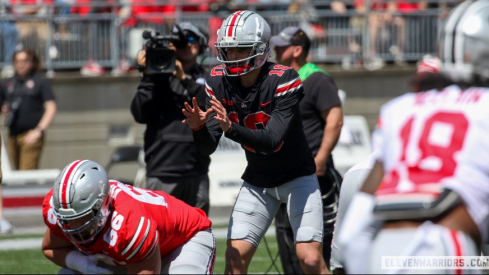 Big Ten Commissioner Delaney's Lucky Charms
Big Ten Commissioner Delaney's Lucky CharmsFormer Big East commissioner (and long time BCS spokesperson/advocate) Mike Tranghese spoke Monday on the elephant in the room: the looming possibility of the Big Ten poaching one (or plural) Big East club(s). Pitt (!), Syracuse (eh), as well as Rutgers (sad face) have all drawn consideration/debate in the past several months since the rumor mill went haywire wit the possibilities of the conference looking east. Tranghese seemed to indicate at this point the expansion momentum had essentially turned all irresistible force on the college football scape:
`I don’t think there’s anything the Big East can do to prevent it. Everyone is on pins and needles waiting to see what the Big Ten will do. It’s a pretty dicey time.’’This echoes the anxious sentiments we've heard in recent weeks from WVU coach Bill Stewart and Washington athletic director Scott Woodward. With any kind of expansion just furthering the conference's potential to turn sports' most lucrative TV deal even richer, it remains likely that cash will continue to rule everything around us. That's not to say that any kind of move would be all windfall, as Tranghese also revealed that Big East clubs presently have a "buy out" fee so to pay if any of them were to attempt departing the league:
``For any school that wants to depart, there is a $5 million fee. That’s not enough to prevent anyone from going. The Big Ten is making an enormous amount of money. Is $5 million significant? Yes. Will a school pay it? Yes. It’s not a deterrent.’’
That pretty much says it all. If year 1 revenues exceed $15-20 million more than what the target schools were already generating, having to take a short term loan out for a cool 5 million dollars isn't going to serve as any kind of deterrent for the programs. The real interest lies in what would happen to the football incarnation of the conference if 1 (or all 3) clubs left. Villanova, the defending FCS champion, could theoretically attempt to make the transition to FBS play, but would be years away from relevance, at best, and hardly a short term solution to maintain the league's viability. Expansion possibilities like Marshall, UCF, Memphis, or East Carolina would hardly make up for the loss of a school of the caliber of Pitt and likely wouldn't make any headway towards keeping the league in possession of an automatic BCS berth. Even just one of the three losses could potentially catastrophic, but really all that can be done at this point (idle chatter aside) is to stay tuned.
National expansion talk doesn't just stop there. The Colorado Daily discusses the costs associated with a potential move for the Buffaloes (and ostensibly a Utah or BYU as well) to jettison their respective conferences and head west to join the Pac 10. Staff write Kyle Ringo sets the cost at roughly in the $9 million dollar range and opines whether the cost of absorbing the initial cost would offset in the long run while also discussing some of the rivalry perks of making the move (hello, Rick Neuheisel). Ringo goes onto explain that basic post-graduation relocation would be the most compelling factor to make the move:
One university official used an anecdote from the 2007 football season to illustrate the potential benefits of switching conferences. Colorado played a nonconference game in football at Arizona State in Tempe, Ariz., that season. The game attracted more than 7,000 CU fans from the area and nearby Southern California. The weekend became a series of fundraising opportunities for regents and school administrators who attended breakfasts, lunches and dinners and small parties in between. Another similar weekend is expected this fall when CU plays at Cal in September. If a decision hasn`t been made by then, it could be an opportunity for Buffs fans to make an impression on Pac-10 officials. CU is generally fortunate to have 1,000 fans at a Big 12 road game.
Those kind of fundamental differences could make the sheer marketability of such a move more palpable and ultimately force the University's hand if the Pac 10's presentation is appetizing enough. The Pac 10's real motivating factor for the expansion at this point in the game (besides opening the door for a potential cash cow championship game) would be the ability to pitch their own network deal, as presently the league's TV revenues are far closer to the Big East level of gross than that of the upper echelon of conference high rollers. While CU's seen better days in both money sports, couple them with a Utah, BYU, and/or a Boise, and the league's profile becomes instantaneously elevated.

